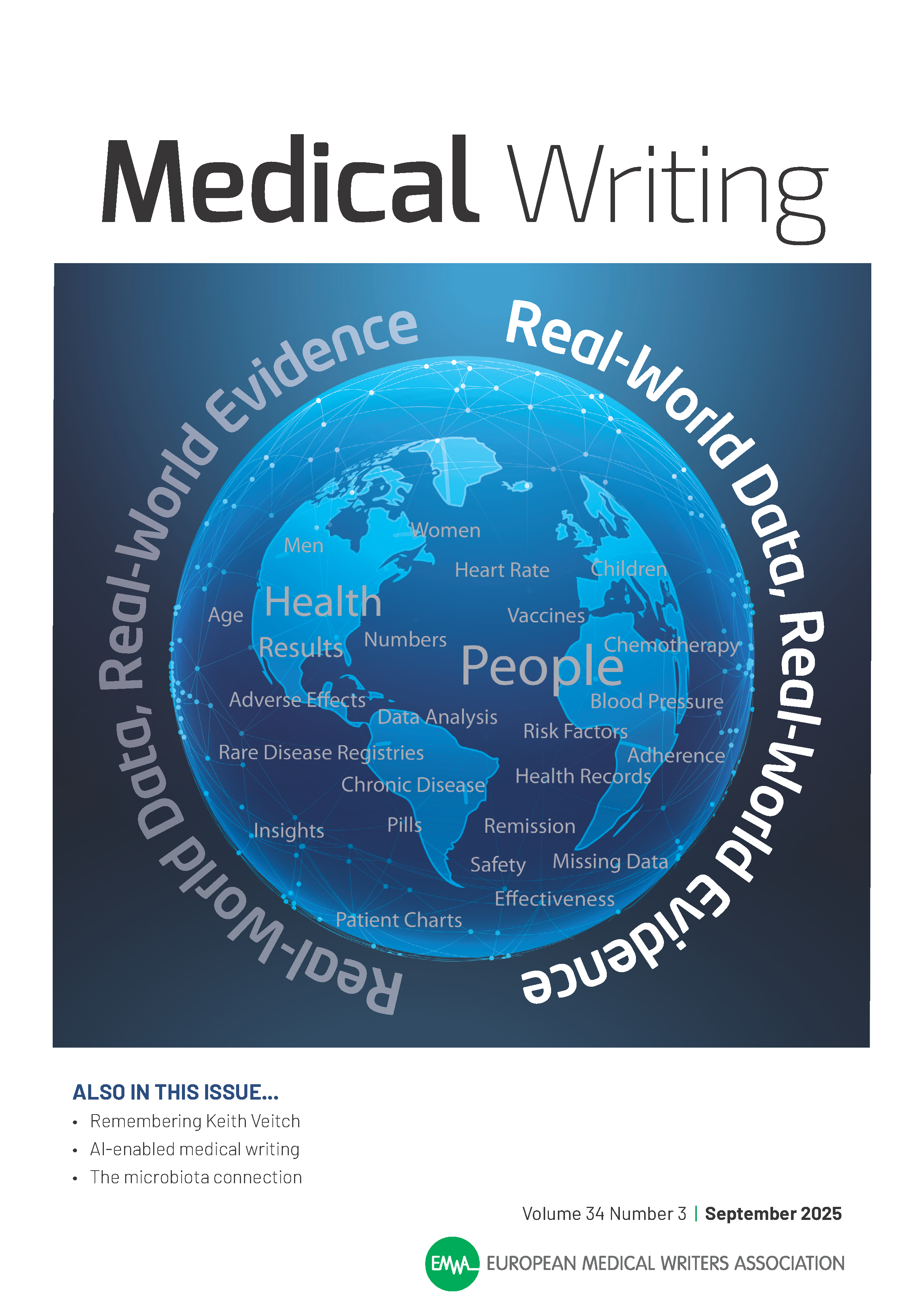
Volume 34, Issue 3 - Real-World Data, Real-World Evidence
From algorithms to insights: The role of medical writers in AI-enhanced real-world evidence
Authors: Gomathi Priya Jeyapal, Prarthana Vigneshwari Reddy, Vrushabh Baburao Satav, Pattabhi Machiraju
Abstract
Real-world evidence (RWE) complements randomised controlled trials (RCTs) by assessing treatment effectiveness in diverse populations. Integrating artificial intelligence (AI) and machine learning (ML) enhances RWE by enabling predictive modelling, risk stratification, and clinical decision support. ML techniques like supervised or unsupervised learning, logistic regression, decision trees, random forests, and XGBoost can help optimise regulatory decision-making and patient care. This paper explores how the AI/ML models help identify high-risk patients, predict disease progression, and assess healthcare burden. The medical writer’s role in structuring findings into clinically meaningful insights is essential for bridging the gap between data science and clinical application. As AI advances, skilled medical writers will ensure transparency, ethical compliance, and effective communication of AI-driven RWE findings.
Medical Writing. 2025;34(3):64–69. https://doi.org/10.56012/vysp1464
 Download the full article
Download the full article
Search
Articles
Links
Editoral Board
Editor-in-Chief
Co-Editors
Senior Editor
Victoria White
Managing Editor
Alicia Brooks Waltman
Associate Editors
Section Editors
AI/Automation
Biotechnology
Digital Communication
EMWA News
Freelancing
Gained in Translation
Getting Your Foot in the Door
Good Writing Practice
Pablo Izquierdo / Alison McIntosh
In the Bookstores
Publications
Medical Communications/Writing for Patients
Medical Devices
My First Medical Writing
News from the EMA
Pharmacovigilance
Regulatory Matters
Regulatory Public Disclosure
Louisa Ludwig-Begall / Sarah Kabani
The Crofter: Sustainable Communications
Veterinary Writing
Editors Emeritus
Layout Designer
Chris Monk
 Visit the EMWA website
Visit the EMWA website